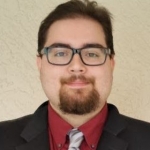Tell us a bit about who you are:
My name is Valerie Ngai PT, DPT, and I am a doctor of physical therapy, who graduated from the NAU/UofA biomedical campus in December 2017. I received my Arizona licensure shortly afterwards in 2018. To become a PT, one has to take the national board exam and then take the state licensure test. Most of my friends in my class received job offers during their clinical rotation or within a month or two. PT is a thriving market with lots of job opportunities, prior to global pandemics.
Tell us more about your search for a job out of PT school:
I wanted a job in pediatrics, and the first pediatric group that emailed me back was also conveniently located close to my house. We do aquatics during the summer, hippotherapy during the winter, and we have an outdoor backyard. I get to be outside, work with children, and do a lot of fun activities to help these children grow. I also enjoy adult ortho, however I felt that it was more conducive to get my foot into the door of pediatrics and specialize early as a newly-minted PT.
What does the average day look like for you (Pre-COVID):
I had a caseload of 30-36 kids at our busiest and I see one kid per hour, one-on-one. The population that I treat is children with long-term disabilities. These children are usually covered by the state. Some conditions include Cerebral Palsy, Autism, Epilepsy, Down Syndrome, Prader-Willi Syndrome, and kids with other at risk chronic conditions.
What I love about my job is that I get to have long term relationships with my patients. Since many of them have long term conditions, my role is not to cure the patients, but to help them develop skills to improve their quality of life.
In a regular session, it often looks like we are playing! I always have activities in mind, but I often try to let the child have a say in choosing the activity. Sometimes they see a new toy or activity they want to try, so I’ll use it as an opportunity for them to learn something new. The focus of physical therapy in these patients is to allow them to be able to gain a greater sense of awareness and control over their bodies so they can move, play, and enjoy their lives more independently. Independence is huge. Kids love to be able to do things themselves and it also allows the parents more freedom to take them outside and helps these children become more included with their peers. The unfortunate reality is that many of these children won’t be able to live completely independently as adults, however if we can intervene early and teach them as much as possible, the burden of care later will be less. If they can say, climb stairs by themselves, you get them to the point where the parent doesn’t have to worry about the child around the stairs.
Sessions are mostly focused on slow and steady gains. I try to be aggressive with goals, but I have to remind myself that these are kids and you can only get so much out of them.
How has the COVID-19 outbreak affected your job, or PT as a whole?
PT as a whole is considered an essential service. My field of outpatient pediatrics is a longer-term kind of service, so learning some of these skills, such as riding a bike or even walking, can wait until the pandemic is over. I am worried that some of my patients will regress without constant therapy to make progress, but I have to weigh that against the risk of infection of myself and other kids in the clinic. Many of these kids have compromised immune systems or won’t tolerate wearing a mask. It has affected many of the children who are very routine-based or who are not as cognizant as to what is happening. The lack of structure and sudden change in routine has resulted in progress reversion and a lot of meltdowns.
At our clinic, we are masking, disinfecting everything, and trying to see kids outside when possible. Aquatics is outside, so we are able to take kids directly to the pool. We try to take kids to separate rooms. I try to take the temperatures and pulse oxs of the kids I am seeing. I am seeing a reduced caseload right now as many of my patients’ families are interested in coming, but they are worried about infection.
PT as a whole has been hit by COVID pretty hard. Inpatient PT’s have been moving around to different departments, and are being used to help prone patients in the ICU. Acute rehab to get patients out of the hospital and home safely is absolutely essential. Outpatient PT has been hit harder. Someone who has a total knee replacement needs therapy during a critical window to make sure the knee straightens fully and that’s essential. However, patients with more subtle findings are able to put PT on the backburner while the pandemic is going on. Because of this, there have been a lot of furloughs, pay cuts, and hiring freezes. Some places have switched from salaried to hourly and a lot of PT techs have been laid off. Some clinics have had to be quarantined for as long as two weeks because a patient tested positive. However, teletherapy is now reimbursable in Arizona for as long as the pandemic is going on, so there have been a lot of clinics adopting teletherapy, including ours, as a way to continue reaching patients. Not every patient is a candidate for teletherapy and there are a lot of situations that don’t have legal guidelines yet, but it’s definitely nice to have that option for patients that we deem appropriate.
So…Hippotherapy?
So, we need to be careful about this because there have been a lot of lawsuits surrounding terminology. You can not prescribe hippotherapy as a physician. It is a tool. We use the movement of the horse as a tool to supplement PT, OT, or Speech therapy goals. As long as a patient has an order for PT, OT, or Speech from a physician, it is within the scope of practice of the therapist to administer. We get scripts for hippotherapy, horse therapy, and equine therapy—we once even got a script for ‘hypnotherapy’—from physicians, and we can not legally fill those.
What does a hippotherapy session look like?
Usually, a session consists of me (the therapist), the kid, the horse, the horse handler who leads the horse, and sometimes a sidewalker who assists me with the activities and acts as an extra set of hands—so it’s basically an entire team that runs the session. We start by putting a helmet and a belt onto the child and we’ll mount the horse from a ramp. The horse is usually bareback with just a saddle pad to let the child feel the motion. The horse usually does not go faster than a walk, but some places do let the horse trot. I’ll walk beside the horse and hold onto the child via the belt for safety. I have had to pull kids off in emergency situations—it usually happens about once or twice a year. I still have a scar on my knee from pulling a kid off of a horse and tripping.
It is also a lot of work to stay upright on a moving horse because we usually don’t use stirrups or reins. We’ll do activities like reaching, catching, throwing balls, and giving high fives. We’ll often change positions to challenge core strength, hip strength, shoulder girdle strength, and balance. We’ll ride backwards, sideways, or on hands and knees. Some advanced children will ride in kneeling position (while I’m still holding onto them via the belt, of course), while tossing bean bags or rings at a target. It also involves a lot of peer interactions as there are a lot of individuals involved, as I mentioned before. They practice interaction and manners with the horse handler, sidewalker, and the horse, which is another benefit.
Hippotherapy isn’t for everyone though. I can’t work on climbing stairs, riding a bike, or jumping jacks with hippotherapy, for example. It’s a powerful tool, but it works best for kids who need stabilizer strengthening, neurorehabilitation, or sensory regulation.
The amazing thing with hippotherapy from a PT perspective is that it can give a child who could never walk a kinesthetic experience that is similar to walking. The horse is certainly cheaper than a pediatric exoskeleton (and of course, that’s certainly not the only difference), but it mimics biological movement in a way that we haven’t yet been able to achieve with technology. The movement of the horse is a coordinated, multiplanar activity, and just sitting on a moving horse allows that complex movement pattern to translate to the patient’s body. That regular movement helps guide the child as to how coordinated motion should feel. They get that neurofeedback, which can help them learn how to organize their own motion. This coordinated, rhythmic sensory input can help with regulating and calming for children who exhibit stimming behaviors.
Thank you for your time in this detailed interview, tell us, what is something fun you have been doing in your free time since COVID started? What resources could we look at to learn more about hippotherapy?
The most fun thing that I’ve been doing is taking free online classes in subjects that I’ve never had the chance to check out. I know it sounds really nerdy, but I’ve been taking self-paced courses in Mandarin, sleep science, economics, graphic design, viral marketing, and positive psychology. It’s been really fun to listen to lectures but not have to do homework or discussion boards. To learn more about hippotherapy, I’d suggest visiting the American Hippotherapy Association website (www.americanhippotherapyassociation.org). They have a lot of resources about what hippotherapy is and what the research has to say about outcomes for different populations.
Mohammad Khan is a fourth-year medical student in The University of Arizona College of Medicine – Phoenix, Class of 2021. He graduated from Arizona State University in 2014 with two bachelor's degrees in biochemistry and biology. He then worked as a teacher and completed a Master's in biomedical diagnostics in 2017. For fun, Mohammad (who also goes by Mokha) likes to practice at the archery range, work on calligraphy, game, and fountain pen writing, and read science fiction novels. He is interested in medicine with a focus on educating patients.


